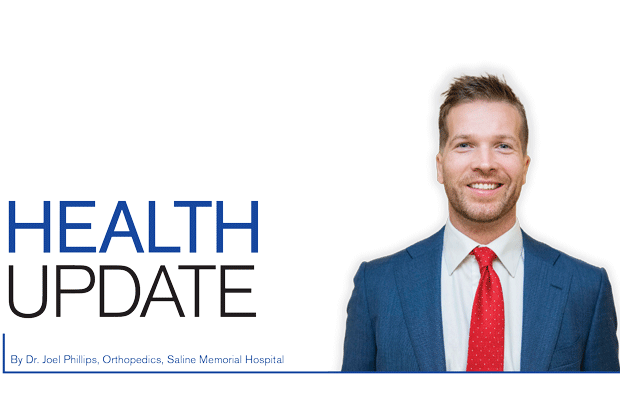Understanding A Healthy Spine

To say someone “has a spine” or “has a backbone” recognizes the strength of that person’s character or integrity. The spine is the key structural member in the body, without which the body would lose its proper position in space and its ability to move through its environment. Dysfunction of the spine, therefore, has significant consequences for the patient.
Issues affecting the spine are incredibly common, with 60–70% of adults experiencing low back pain alone during their lifetimes, and with 149 million workdays lost annually in the United States at a cost of $100–200 billion (1). Globally, low back pain is the leading cause of activity limitation (1). It also is one of the most common presenting complaints seen in primary care. Understanding healthy spine preventative practices that mitigate risk of spine compromise, as well as existing treatment options, greatly benefits the individual patient and the public at large.
This discussion focuses on low back pain. The lumbar spine is typically composed of five lumbar vertebrae separated by intervening lumbar intervertebral discs. Flanking the lumbar spine are the thoracic spine above and the sacrum (pelvis) below. Each vertebra consists of a central boney block or vertebral body with two struts of bone (pedicles) projecting towards the back, while two laminae join to form the roof of the spinal canal.
Transverse processes are boney projections on the side of the spine, and each level includes paired facet joints. Corresponding musculoligamentous structures stabilize the spine and help it move in space. The lumbar spine engages mostly in forward flexion (bending) and extension (straightening). All these unique structural components relate dynamically to one another. Issues affecting any or a combination of these structures can cause back pain and associated conditions.
The intervertebral disc plays a key role in spine health and spine pathology respectively. The disc consists of a fibrous outer portion (annulus fibrosus) and a softer inner portion (nucleus pulposus). It connects the vertebrae above and below, bears weight, distributes and absorbs load, and allows the spine to move.
When a disc is damaged or wears out with time, its structural and chemical properties change. This can affect both the surrounding musculoskeletal elements—leading to conditions such as arthritis of the spine (spondylosis)—as well as issues involving the neurological elements, like a pinched nerve (radiculopathy/ “sciatica”) or spinal stenosis (narrowing around the nerves).
You might be asking, “How do I protect my back? And what are my options if I have a problem?” Let’s start with the first question. The spine, like any mechanical structure subjected to repeated loading and motion, can develop wear. One way to mitigate some of this risk is reducing the load your spine experiences by maintaining a healthy body weight with exercise and diet. If you are looking to lose some weight and reduce the stress on your spine, low impact activities such as swimming, a recumbent bike, or an elliptical are excellent forms of exercise that are generally spine-friendly.
Posture is another crucial element of a healthy back. Activities assisting posture include abdominal/core strengthening as well as maintaining strength and correct tension of the muscles around the pelvis and hips. This can be done with a trainer, chiropractor, or physical therapist. The North American Spine Society has some excellent online patient resources concerning this.
A third strategy is to avoid smoking, as smoking has been linked to degenerative disc disease. Good spinal health is yet another benefit among the many to smoking cessation or avoidance.
One final factor is encouraging proper body mechanics with lifting and sport. Although not always possible, using correct lifting techniques with a straight back, a strong flexed core, and a strong posterior chain can help mitigate the risk of spine injury.
Bracing with a soft brace is another option some patients feel aids in symptomatic relief, though without strong evidence to support it. Topical treatments including ice, heat, pain creams, and TENS also have limited evidence but do provide relief in some patients.
Interventional pain management can offer injections such as epidurals, root blocks and medial branch blocks that combine a steroid and a local freezing agent to treat symptoms of a pinched nerve and back pain. Many patients receive relief of varying durations through such interventions. Ablations, which involve the burning of small painful nerves, can provide longer lasting pain relief in the appropriate patient.
Surgical treatments typically serve patients who have failed many of the above interventions, with some exceptions depending on the patient’s symptoms and imaging. Surgeries include decompressions/discectomies to alleviate pressure on a nerve either as a stand-alone procedure or combined with an instrumented fusion in which screws, rods, and cages stabilize the spine. Approaches to these procedures vary.
Whether you are experiencing some new low back pain, chronic pain, symptoms involving the arms and legs from pressure or narrowing around neurological structures, or more serious symptoms of weakness, loss of coordination, or alterations in bowel or bladder function, I am here to help. As both a spine surgeon and a spine patient who has undergone spine surgery myself, I am passionate about improving spine health in my new community here in Benton and Bryant. I look forward to serving you and improving the spine health of many.










0 comments